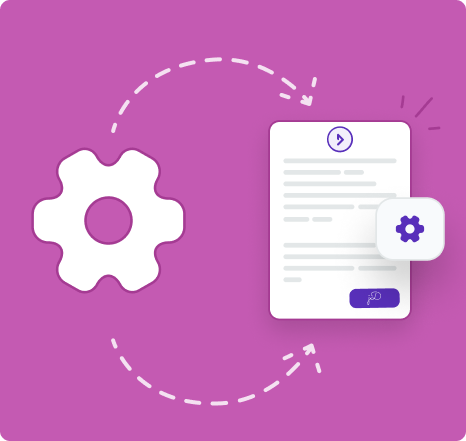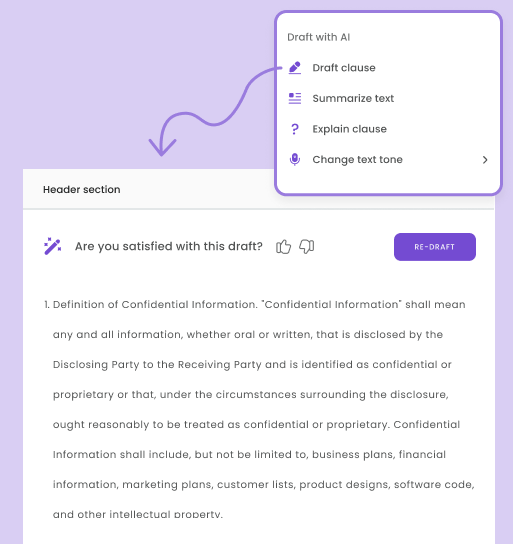Businesses revolve around the value that they deliver to customers. If the value you create is greater than the cost of producing that value, you profit.
If the value you create is less than the cost of producing that value, you make a loss.
Value stream mapping is an essential part of understanding where and how you deliver value to customers. Surprisingly, many businesses have no idea how to do that.
In this guide, you’ll learn what value stream mapping is, the key components, benefits, and challenges you may experience.
Introduction
- Purpose of VSM in process improvement
- Industries and scenarios where VSM is used
Understanding Value Streams
Value stream mapping (VSM) is a simple but powerful way for you to see how value flows through a process.
You’re creating a visual map of every step involved in delivering a product or service. This includes the moment a customer makes a request to the moment they receive it.
The goal?
To spot inefficiencies, eliminate waste, and help your team create more value with less effort.
A value stream is just what it sounds like: it’s the flow of value through your organization.
It includes every activity that contributes to delivering something your customer cares about. Whether you’re manufacturing a product, building software, providing a service, or handling internal operations, you’re working within value streams.
Differentiating value-added vs. non-value-added activities
As you map your value stream, you’ll notice that not all steps add value. Value-added activities are things your customer would willingly pay for—they change the product or service in a way the customer values.
Non-value-added activities don’t add value; they’re often necessary (like compliance checks) or pure waste (like waiting time or rework). Your mission is to spot these and reduce or eliminate them wherever possible.
Why should you care about cutting waste?
Because waste slows you down, costs money, and frustrates both customers and employees. By eliminating waste, you make your process leaner and more responsive.
Customers get what they want faster and with better quality. Your team focuses on meaningful work. And your leadership team sees stronger results.
Of course, there needs to be a balance. Reducing the non-value added activities too much can negatively impact the value-added activities.
Key Components of Value Stream Mapping
Current State Map
When you start with value stream mapping, you always begin by looking at how things work today. This is called your current state map.
Think of it as taking a snapshot of your existing process. You map out every step, every delay, every handoff. The goal here isn’t to judge, it’s to understand.
You want to see where the value flows smoothly and where it gets stuck. By making the invisible visible, you’ll start to see patterns and opportunities that aren’t obvious when the process is only in people’s heads.
Future State Map
Once you know what your process really looks like, it’s time to dream a little. The future state map is where you design your ideal process. This process should deliver the same or more value with less waste.
You take what you’ve learned from your current state and ask, How could this work better?
Maybe you streamline approvals, automate manual tasks, or eliminate unnecessary steps. The future state map gives your team a clear target to work toward.
Kaizen Opportunities
No process is ever perfect, and that’s where Kaizen comes in. Kaizen means continuous improvement. You find and act on small changes that make a big difference over time.
As you map your value stream, you’ll naturally start spotting Kaizen opportunities: a redundant check that could be removed, a handoff that could be automated, a delay that could be shortened.
By building Kaizen into your value stream mindset, you’ll keep your processes evolving and improving, not just once but continuously.
Steps to Create a Value Stream Map
1. Define the Scope and Objectives
Before you dive into mapping, you need to get clear on what you’re trying to accomplish. This is essential in any type of process improvement.
Ask yourself: Which process am I mapping? Where does it start and end? What do I hope to improve, such as speed, quality, cost, customer experience?
Defining your scope and objectives upfront helps you stay focused and ensures everyone on the team is aligned.
2. Identify Process Steps and Data
Next, you’ll walk through the process and capture each step involved. This is the basic analysis on which every other thing depends.
Talk to the people doing the work because they’re your best source of knowledge. Document what happens, in what order, and how long each step takes.
Gather key data like cycle time, lead time, wait time, and inventory levels. This gives you the raw material you’ll use to build your map.
3. Visualize Material and Information Flow
Now it’s time to put it all on paper (or a whiteboard, or a digital tool). Your goal is to visualize both the flow of materials and the flow of information.
Show how work moves from one step to the next. Include how orders come in, how decisions get made, and where communication happens.
This is where your value stream comes to life and where the aha moments start happening.
4. Identify Waste and Bottlenecks
As you study your current state map, start looking for waste and bottlenecks.
Are there steps that add no value? Are there long waits between activities? Are materials piling up in certain areas?
Bottlenecks can slow down the entire process, and waste adds cost without benefit. Identifying these is the first step toward eliminating them.
5. Design the Future State Map
Armed with insights from your current map, you’re ready to create a future state map. This is your vision for a process that flows more smoothly and efficiently.
You’ll remove waste, streamline steps, and improve information flow. Don’t aim for perfection. Instead, aim for better. And keep the future state grounded in reality so your team can achieve it promptly.
6. Develop an Action Plan for Implementation
Finally, ideas need to turn into action. Build a clear action plan that lays out what changes will be made, who will own them, and when they’ll happen.
Start with high-impact, low-effort improvements (your quick wins) to build momentum. Make sure to track progress and revisit your map periodically because value stream mapping is an ongoing process, not a one-time project.
Benefits of Value Stream Mapping
Improves process efficiency and reduces waste
One of the biggest wins you’ll see from value stream mapping is how it boosts efficiency. By shining a light on every step of your process, you’ll clearly see where waste lives, whether it’s unnecessary handoffs, long wait times, or extra steps no one really needs.
Once you see it, you can fix it.
The result?
Less wasted time and effort, faster delivery, and lower costs. Your team can spend more energy on activities that truly matter to your customers.
Enhances team collaboration and understanding
When you map a value stream, you naturally bring people from across the process together. The act of mapping fosters collaboration and shared understanding.
Everyone sees the same picture of how things work (or don’t work), and silos start to break down. Suddenly, you’re not just fixing “your part” of the process, you’re improving it as a team. This shared mindset is powerful and lasting.
Provides a clear roadmap for continuous improvement
Another great benefit of value stream mapping is that it doesn’t just give you insights, it gives you a roadmap for action. Your future state map shows where you want to go, and your action plan lays out how to get there.
Plus, because you’re always on the lookout for Kaizen opportunities, VSM supports an ongoing culture of continuous improvement. The map evolves with your business, helping you stay agile and customer-focused over time.
Common Challenges and How to Overcome Them
Resistance to change among employees
I’ll be frank—change is hard. If you’ve ever tried to establish a new habit or break an old one, you’ll understand what I mean.
When you start value stream mapping, you may run into resistance from employees who are comfortable with how things are or who fear that process changes could threaten their roles.
The key is to bring them into the process early. Involve the people who do the work in creating the current state map and brainstorming improvements.
When they feel heard and empowered, they’re much more likely to embrace change instead of fight it.
Difficulty gathering accurate data
Another common challenge is getting good data. Some processes aren’t well-documented, and sometimes data is spread across different systems or just not tracked at all.
The trick here is to start where you are. You don’t wait for perfect data. Use interviews, observations, and what data you do have to build your initial map.
You can refine it over time. The goal isn’t to create a perfect map, it’s to create a useful one.
Ensuring long-term sustainability of improvements
It’s easy to celebrate quick wins after a value stream mapping workshop, but keeping the momentum going is where many organizations stumble.
To make improvements stick, you need to build them into your regular management routines. Set up metrics to track progress, hold regular check-ins to review the value stream, and reinforce a culture of continuous improvement.
Leadership support is critical here—if you keep VSM front and center, your team will too.
Conclusion
Value stream mapping can be a powerful tool to improve your business. With that being said, it’s not a straightforward as many people thing. It requires focused effort over time.
This guide has broken down what value stream mapping is, how to do it, the benefits it brings, and the challenges you may experience.
It’s your turn. Start with smaller processes that are ripe for improvement and work your way up from there. If you’re trying to improve your document processes, be sure to check out DoxFlowy.




